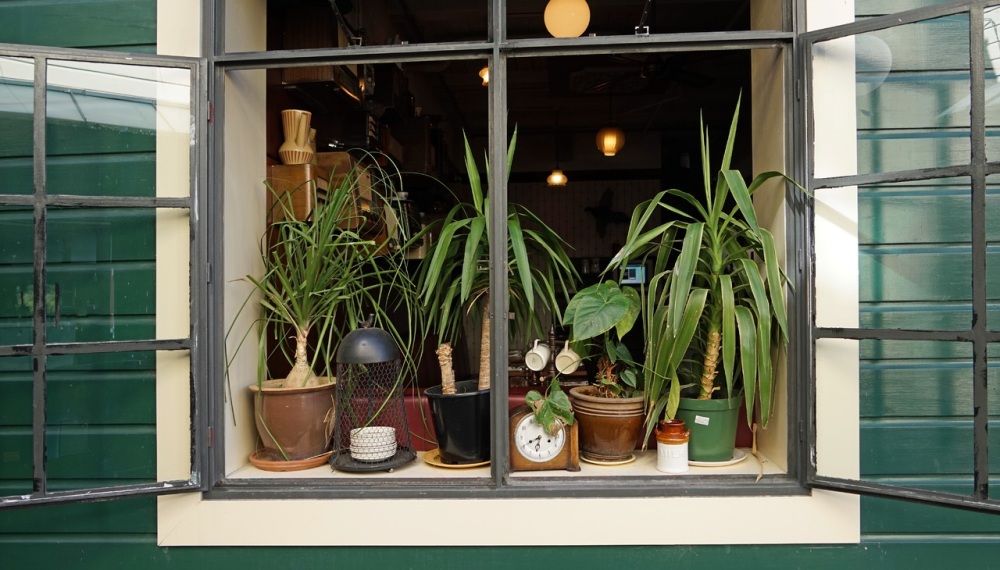
In today’s fast-paced world, the importance of creating a sanctuary within our homes cannot be overstated. Bringing nature indoors through plant styling offers a rejuvenating and calming effect, elevating the ambiance and aesthetic of any living space. Whether you’re a seasoned plant enthusiast or just beginning to explore the world of indoor gardening, mastering the art of plant styling can transform your home into a lush and inviting oasis. In this guide, we’ll delve deeper into expert tips and techniques for incorporating greenery into your living space and mastering the art of plant styling.
Choosing the Right Plants for Your Space
Selecting the perfect plants for your home involves more than just aesthetics; it requires careful consideration of factors such as lighting conditions, humidity levels, and available space. Begin by assessing the natural light available in each room and choosing plants that thrive in those conditions. For low-light areas, opt for resilient varieties like pothos, peace lilies, or snake plants. In rooms with ample sunlight, consider flowering plants such as orchids or succulents. Additionally, take into account the size of your space and select plants that won’t overcrowd the area. Incorporating a mix of foliage shapes, textures, and colors can add visual interest and dimension to your indoor garden.
Creating Stunning Plant Displays
Once you’ve chosen your plants, it’s time to get creative with your display arrangements. Experiment with different containers, including ceramic pots, terracotta planters, or decorative baskets, to complement your home’s decor style. Group plants together in clusters to create visually striking arrangements, or place them individually as focal points in various rooms. Consider utilizing vertical space by hanging plants from the ceiling or mounting them on walls using macrame plant hangers or wall-mounted planters. Mixing and matching different plant heights and sizes can add depth and drama to your display while creating a dynamic visual impact.
Incorporating Plants into Existing Decor
Integrating plants seamlessly into your existing decor can enhance the overall aesthetic of your home while promoting a sense of harmony and tranquility. Use plants as natural accents to soften hard edges and add warmth to modern interiors. Place them strategically on shelves, side tables, or windowsills to create focal points and draw the eye. Consider incorporating trailing plants like ivy or philodendron to add movement and visual interest to your decor. Don’t be afraid to experiment with different plant combinations and placements until you find the perfect balance that complements your home’s style and ambiance.
Maintaining Healthy and Happy Plants
Proper care and maintenance are essential for keeping your indoor plants thriving and looking their best. Develop a watering schedule based on each plant’s specific needs, taking into account factors such as soil moisture, light exposure, and humidity levels. Avoid overwatering, as it can lead to root rot and other moisture-related issues. Regularly inspect plants for signs of pests or disease, such as yellowing leaves or unusual spots, and take prompt action to address any problems. Dusting leaves regularly with a damp cloth can improve light absorption and prevent dust buildup, keeping your plants healthy and vibrant.
Using Plants to Improve Indoor Air Quality
In addition to their aesthetic appeal, indoor plants offer numerous health benefits, including improving indoor air quality. Many plants act as natural air purifiers, removing toxins and pollutants from the air and creating a healthier living environment. Consider incorporating air-purifying plants like spider plants, peace lilies, or Boston ferns into your home to enjoy cleaner and fresher air. Not only will these plants enhance the aesthetic of your space, but they’ll also contribute to a healthier and more invigorating atmosphere for you and your family.
Styling Plants in Different Rooms
Each room in your home presents unique opportunities for plant styling, allowing you to tailor your indoor garden to suit the specific needs and aesthetics of each space. In the living room, large statement plants like fiddle leaf figs or rubber trees can add drama and visual impact, while smaller plants like pothos or spider plants can thrive on shelves or side tables. In the bedroom, consider placing a small tabletop plant or hanging planter near the window to create a calming and restful atmosphere conducive to relaxation. In the kitchen, herb gardens or small potted plants can add freshness and vitality to the space, while in the bathroom, moisture-loving plants like ferns or orchids can thrive in the humid environment.
Creating an Indoor Garden Oasis
For those with ample space and a green thumb, creating an indoor garden oasis is the ultimate goal. Transform a sunny corner or unused nook into a verdant retreat filled with lush foliage and blooming flowers. Mix and match different plant varieties to create a diverse and dynamic ecosystem, incorporating both flowering and non-flowering plants for added visual interest. Add seating, lighting, and decorative elements such as trellises or plant stands to enhance the ambiance and create a cozy and inviting space where you can relax and connect with nature.
Conclusion
Mastering the art of plant styling allows you to bring the beauty of nature indoors and create a tranquil and inviting atmosphere within your home. By carefully selecting the right plants for your space, creating stunning displays, and incorporating greenery seamlessly into your existing decor, you can transform any room into a lush and vibrant oasis. With proper care and maintenance, your indoor garden will flourish, bringing joy and serenity to your home for years to come.

FAQs
How do I choose the right plants for my space?
Select plants based on factors such as lighting conditions, humidity levels, and available space. Consider low-maintenance varieties for beginners and mix different sizes and textures for visual interest.
How can I incorporate plants into my existing decor?
Use plants as natural accents to soften hard edges and add warmth to modern interiors. Experiment with placement on shelves, tables, or walls to create focal points that complement your decor.
What are some tips for maintaining healthy indoor plants?
Develop a watering schedule based on each plant’s needs, inspect regularly for pests or disease, and dust leaves to improve light absorption. Avoid overwatering and provide adequate ventilation for optimal growth.
Can indoor plants improve air quality?
Yes, many indoor plants act as natural air purifiers, removing toxins and pollutants from the air and creating a healthier living environment.
How can I create an indoor garden oasis?
Transform a sunny corner or unused nook into a verdant retreat filled with lush foliage and blooming flowers. Mix and match plant varieties, add seating and decorative elements, and create a cozy and inviting space to relax and connect with nature.
